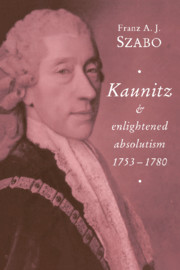5 - The transformation of society
Published online by Cambridge University Press: 28 August 2009
Summary
Cameralists had been aware that at the heart of the economic problems of the Habsburg Monarchy lay an archaic social structure whose stubborn defence by the privileged orders of society constituted the principal impediment to the success of the reforms they envisioned. By and large, however, they were a conservative lot in questions of social policy, and their prescriptions tended to be overlaid with a heavy cloak of paternalism. Modern historians have argued that early modern elites sought to rationalize social structures by the imposition of a “social discipline” on inchoate traditionalist populations, with the intent of increasing both control and productivity. If the long-range agenda of this effort was an endeavor “to foster and give full scope to the creative energies of the individual members of society by means of the state's direction,” the key to its success was the internalization of the new rigorous social norms. Yet this could be achieved only by the transformation of mere “subjects” into more autonomous “citizens,” and herein lies the central historiographical problem of enlightened absolutism.
If the more traditional interpretations which emphasize the reactionary, retarding features of enlightened absolutism are correct, then what transformation of society occurred was insignificant, indirect and unwanted. In short, it would be justified to regard eighteenth-century developments as mere conservative holding-actions intent on preserving traditional hierarchical structures.
- Type
- Chapter
- Information
- Kaunitz and Enlightened Absolutism 1753–1780 , pp. 154 - 208Publisher: Cambridge University PressPrint publication year: 1994
- 1
- Cited by

